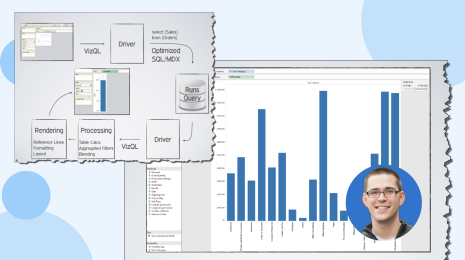Successful data-driven companies must balance human and machine roles
This piece was originally published on CIO.com.
The latest Future of Jobs report from the World Economic Forum speaks to how technological advancements like artificial intelligence, machine learning, and big data could affect jobs worldwide in the next five years. The anticipated redistribution of work between humans and machines may displace 75 million jobs, but it’s likely to create as many as 133 million new ones, too, according to the report.
This major shift in jobs may not reassure those of you who believe technology is a threat to your role. But the reality is that smarter technologies provide an amazing opportunity to focus on the ways that we create the most value for our organizations. Creativity and strategic thinking remain distinctly human advantages. When paired with the increased processing capacity of machines, there is plenty of room to be optimistic about the future.
Understanding the strengths of people vs. machines
We are far from a reality where we can trust machines to make business decisions with human-like judgment and contextual understanding. Today, we trust machines to automate tasks and analysis in areas that are heavily parameterized and minimally risky. In some situations where human intervention or oversight are needed, we depend on the support of machines to gain deeper understanding and make more confident decisions.
Humans can gain a lot from artificial intelligence and machine learning. For example:
- Automating operational tasks — Machine learning and artificial intelligence have made tremendous progress in applications where algorithms are fueled by the highly specialized, repetitive tasks. Think of websites serving up “you may be interested in...” suggestions for related content or products, or even fraud detection programs. Though the variables in identifying unauthorized spending are more complex than in a book recommendation, what these algorithms have in common is that they are highly tuned to one task—with incredible accuracy based on their superior computational power.
- Offering more intelligent starting points — By broadly tracking user behaviors, systems can provide smarter defaults and recommend actions, and tune and personalize them over time based on how people respond. We do this today in analytics applications where insights can be derived faster by applying successful techniques from one data set to other data sources with similar characteristics.
- Making sophisticated analysis approachable — Analytics platforms are leveraging machine learning to bring advanced analysis capabilities to users without data science backgrounds. For example, machines can select from the best forecasting and clustering algorithms based on which offers the most certainty. The underlying models can be exposed and explained, maintaining transparency and offering the opportunity to tune the models if needed.
- Providing a more complete picture — Machines don’t sleep and they can perform repetitive tasks and calculations extremely well. With the ability to perform a much more thorough analysis, computers can effectively look under every rock. This type of complete view can help us avoid confirmation bias in our analysis.
Maintaining the human touch
Computers today are not as good as humans at long-term planning, abstract or creative thinking, or making decisions that require specific domain experience or context. For example, a machine-driven process might alert you to a customer who churns. But maybe it was a good thing for that customer to leave because they weren’t purchasing enough profitable products. We are better than machines at making the intellectual leap that there are different ways to look at customer churn.
Or, you may have a salesperson ignoring certain leads in their queue based on lessons they’ve learned from their previous sales experience. These types of instincts are not easily built by machines. The machine will likely flag a missed opportunity, whereas the sales rep has the wisdom to not waste the time.
Understanding cause and effect also remains a strength of humans. While machines are getting better at finding hidden correlations in limited data sets, we still rely on people to discern causality from coincidence. Predictive analytics offer great opportunities to explore “what-if” scenarios, but still require human judgment to validate the machine’s prescriptive actions.
Looking to opportunities on the horizon
On our journey to blend and balance the analytical capabilities of man and machine, there will be plenty of new, important roles for humans. It's no surprise that millions of emerging jobs—including most of those anticipated in the World Economic Forum report—center around data. The scope will only widen as use cases for data evolve.
We'll need human ingenuity to ask the right questions and fine-tune the outputs of smart analytics. Increasingly we’ll need people to to monitor and maintain ethics in AI and machine learning. Others will focus on enabling higher levels of data literacy to make analytics accessible and valuable to users of varying skill levels.
No matter how smart our technology gets, we can’t forget the ultimate purpose of analytics: to inform decision-making. Once we know the actions we need to take, we can work out where to entrust decisions—where we want to automate, where we want oversight, and where we want to apply uniquely human skills. The most successful organizations won’t be the ones who automate the most tasks, but those that understand how machines and data can best empower the people making the calls.









